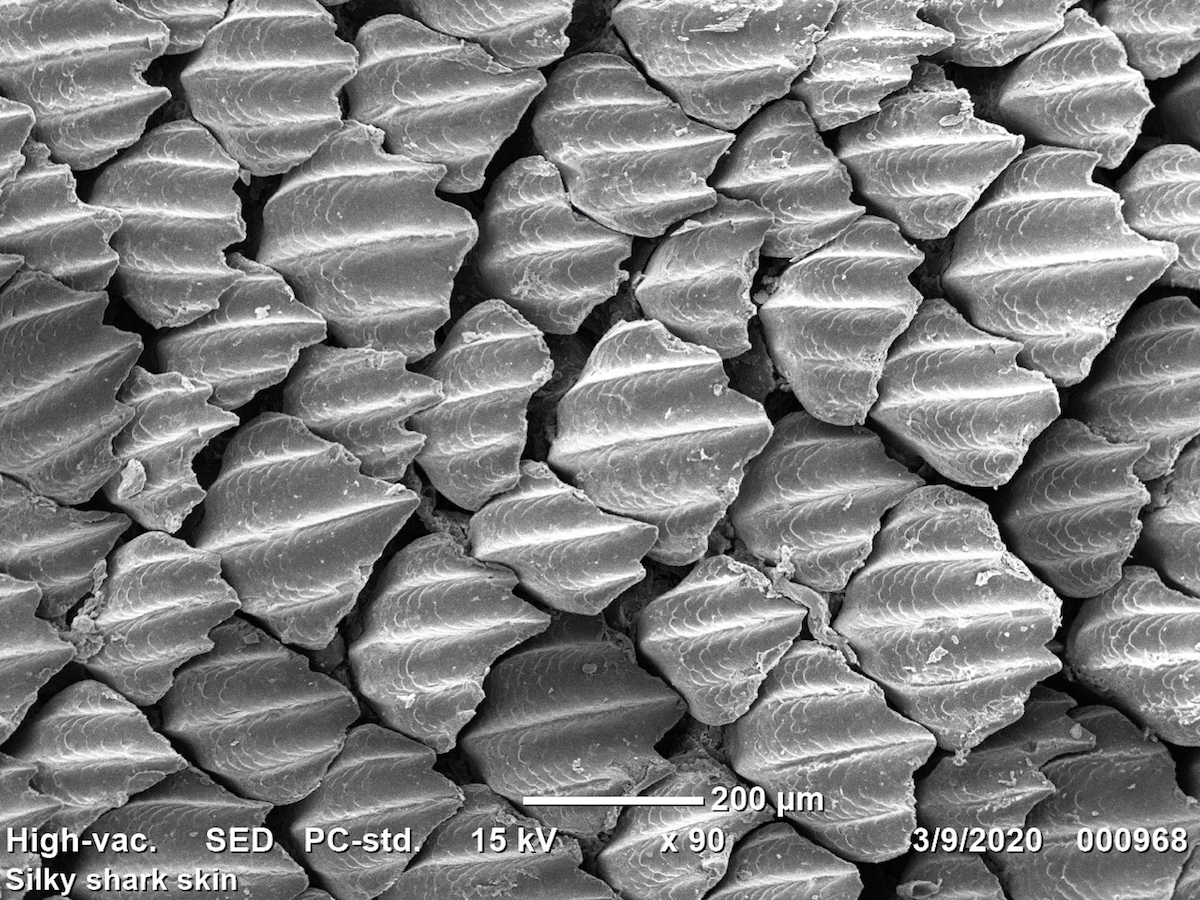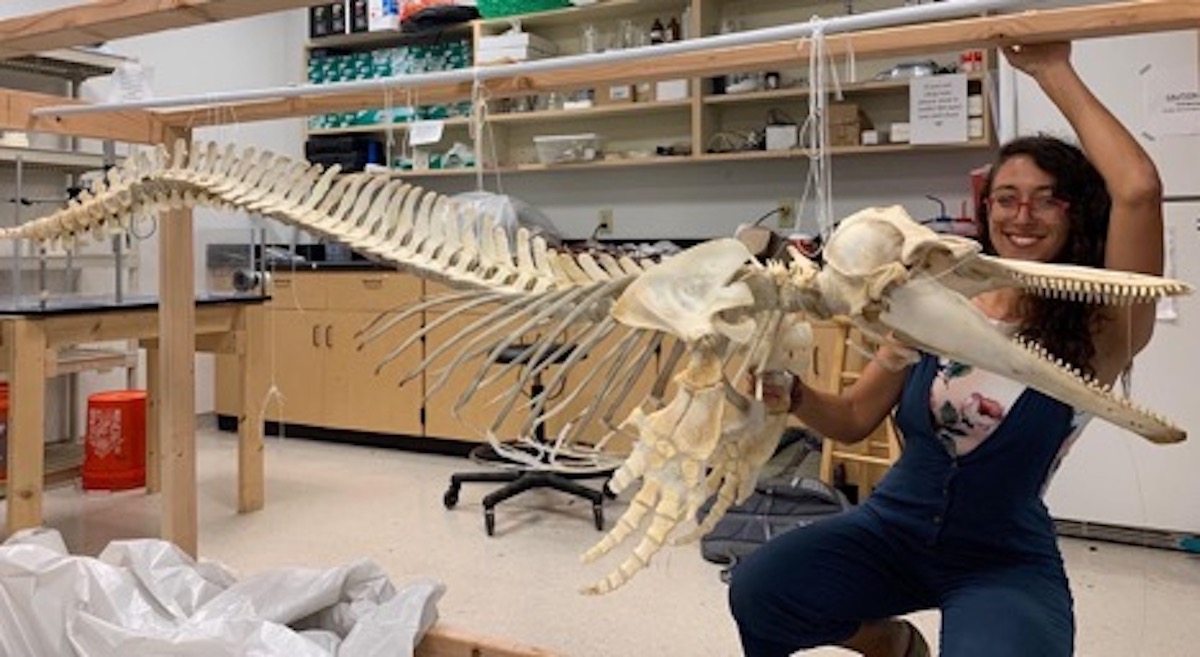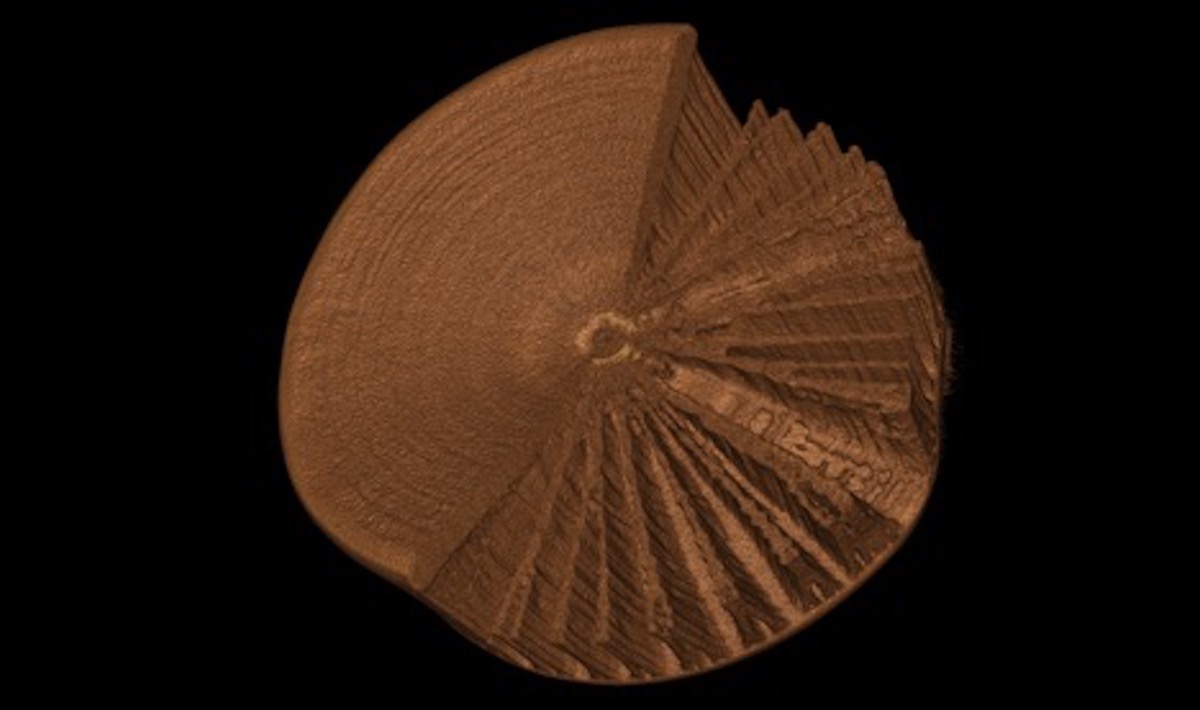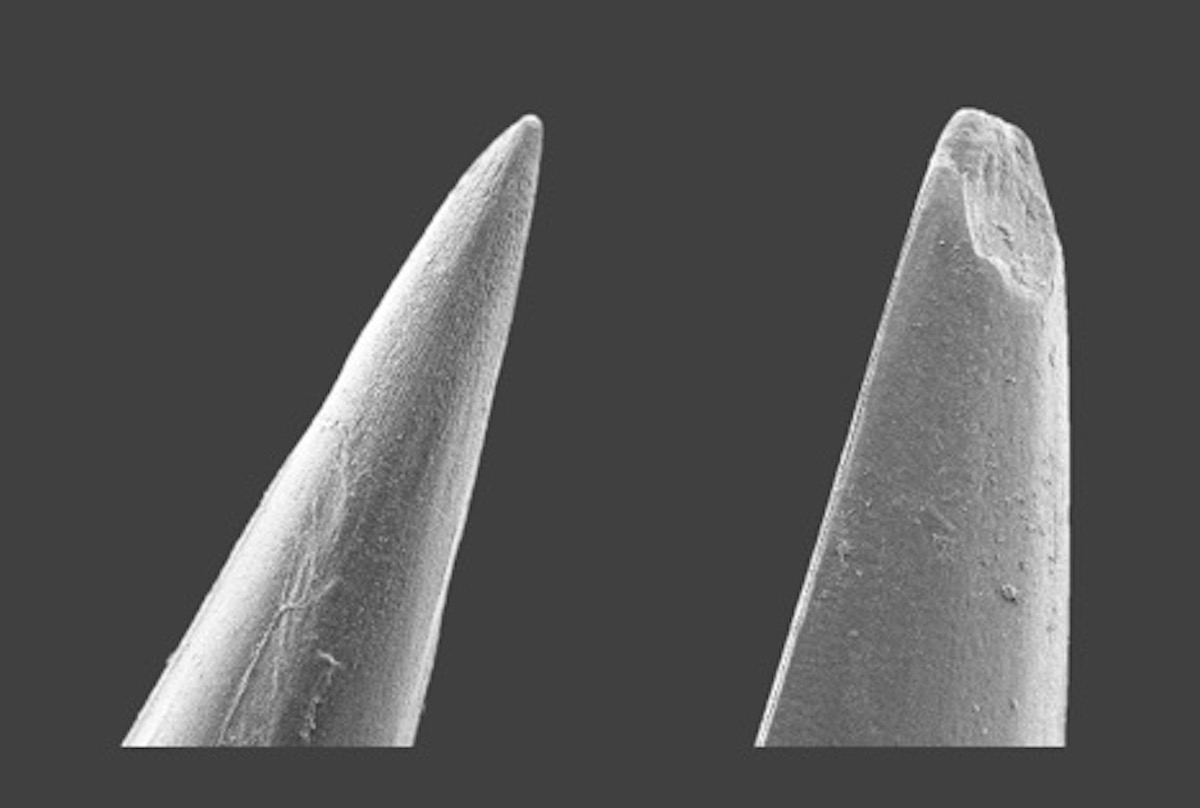

One of the animals we study is sharks because they have many interesting traits. Their skin is covered with scales called dermal denticles, similar to small teeth, that help them to swim effectively. Underneath the coat of toothy armor, there are fibers that help the shark to be more flexible.
 Marine Mammal Vertebrae
Marine Mammal VertebraeBones provide the supportive framework for all vertebrates, from tiny rodents that live underground to birds that soar through the skies. In the past, researchers have focused on the bones of land mammals to learn about how they support themselves against gravitational forces as they walk, run, jump, or fly through their habitats.
The Florida Atlantic Biomechanics (FAB Lab) investigates the structure of bones from marine mammals, local to South Florida, such as manatees, dolphins, and whales. What is interesting about the bones of marine mammals? Since they live underwater their entire lives, they interact with their environment completely differently than land mammals like us. For example, their bones develop in a watery environment where buoyancy and pressure are important forces on their bodies. In contrast, land animals’ bones support their bodies against gravity as the major force. Information on the functional structure of marine mammal bones can help us learn more about adaptations of the skeleton in conditions where there are fewer effects from gravity such as in the water. These studies help us understand the effects of low gravity such as when humans explore outer space for long periods of time.

Touch your nose and wiggle your ears. These are parts of our body that are made of cartilage. Sharks make their entire skeletons out of cartilage. But how do they swim so fast with a flimsy skeleton?
Sharks use the “squishy” qualities of cartilage to help them swim. They use their whole bodies and the fin on their tails to swim through the water. In the center of their body is the vertebral column (part of the skeleton). It is made up of vertebrae and joints just like your spine.
Sharks use the squishy cartilage in the vertebral column to make it work like a spring. Springs are important because they store energy and return energy. This spring-like quality of cartilage helps the shark move through the water without having to work very hard.

Lionfish are an invasive species in South Florida and the Caribbean. Normally found in the Indian and Pacific Oceans, they were introduced to our waters and are now causing extensive harm to the environment. Lionfish have 18 venomous spines on three fin locations: their back, pelvis (which is near their head!), and along their underside towards the tail. Florida Atlantic University’s Biomechanics Lab studies how these spines can bend away from predators and how well the spines can puncture the skin of different predators. By studying structures used for defense, we can understand how lionfish spines enable them to invade new regions.